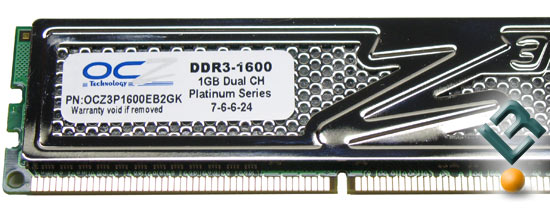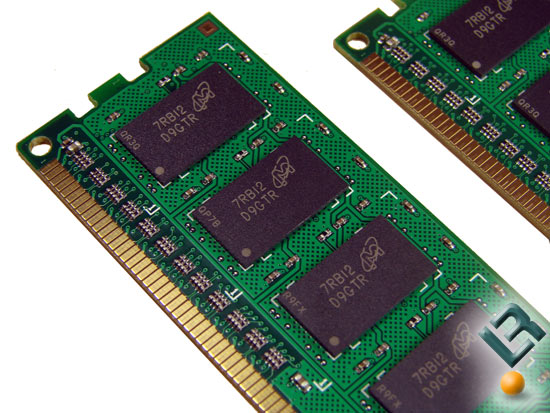OCZ DDR3 PC3-12800 2GB 1600MHz Memory Kit Review
Under The Heat Spreader

The OCZ DDR3 PC3-12800 Platinum Dual Channel Enhanced Bandwidth Edition memory series is 1GB and 2GB single modules and 2GB and 4GB dual-channel memory kits. This means that 64-bit Windows users can enjoy 4GB high performance memory kits. The 4GB (OCZ3P1600EB4GK) kit will set you back $1259, while the 2GB kit (OCZ3P1600EB2GK)is more affordable at $592. It should be noted that the SPDs on these modules are programmed to JEDEC standard latency DDR3-1333Mhz timings of 9-9-9-24 2T at 1.5V, so one has to manually set the timings to 7-6-6-24 1T at 1.9V in the BIOS to properly install and operate this kit. To reach 1600MHz on the memory the Front Side Bus (FSB) must be set to 400MHz and the proper memory divider selected, so if you are thinking of purchasing this kit of memory be sure to understand your system must be overclocked to utilize the full potential of this kit.
Key Features:
- Memory amount: 2 x 1024MB
- 240-pin Unbuffered DIMM
- IC Brand: Micron D9GTR (sixteen 128M x 8-bit ICs)
- 1600MHz (PC3-12800) Unbuffered non-ECC DDR3 Modules
- CAS latency: 7 clock cycles
- RAS precharge: 6 cycles
- RAS active to precharge: 24 cycles
- Platinum XTC (Xtreme Thermal Convection) heatspreaders for thermal diffusion
- Latency: 7-6-6-24
- Power Required�1.90V
- Lifetime Warranty

With the XTC (Xtreme Thermal Convection) heatspreaders removed the Micron D9GTR memory ICs can be easily seen. This is where the magic happens and while it may not look that impressive these little ICs will bring joy to overclockers around the world. By looking up the FBGA code, I figured out that OCZ is using ICs with the part number MT41J128M8BY-187E:B in these modules. According to the Micron website these parts are still sampling and not in full production.
Now that we know what memory kit we are looking at today and the main features, lets take a look at stability testing.

Comments are closed.